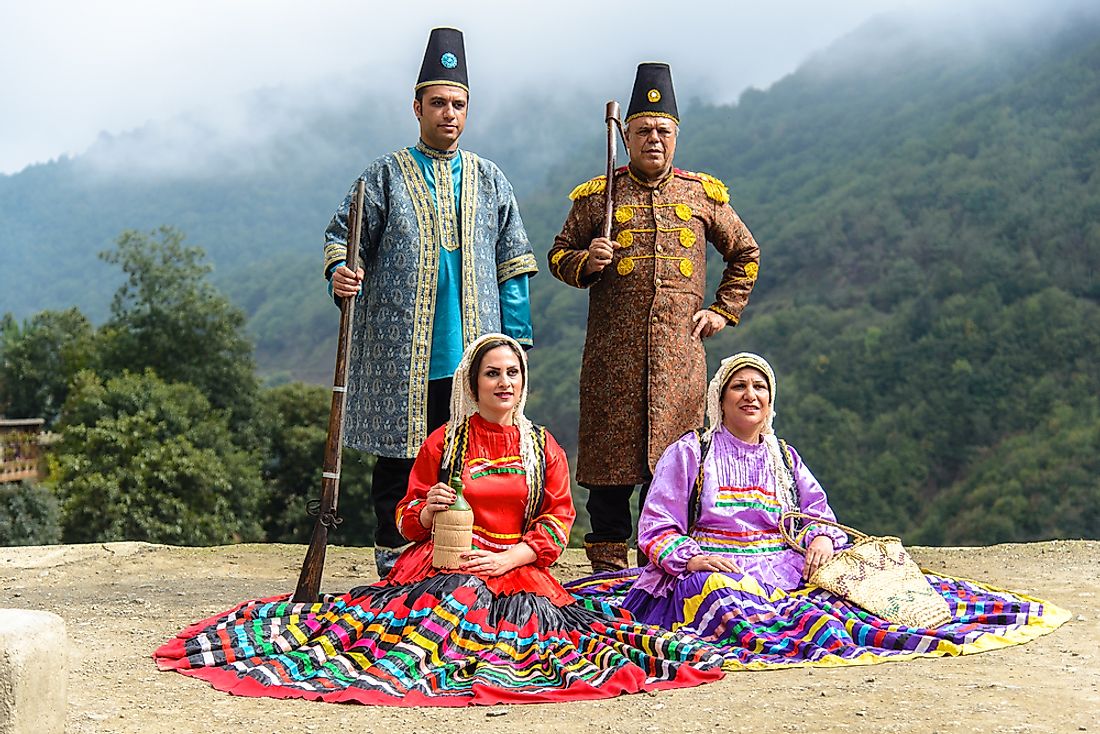Largest Ethnic Groups In Iran

Iran is a country at the juncture of Western Asia and the Middle East. Iran borders seven other countries, including Afghanistan, Armenia, Azerbaijan, Iraq, Pakistan, Turkey, and Turkey. It also borders the Gulf of Oman, the Caspian Sea, and the Persian Gulf. The country was known as Persia until 1935.
Iran is a multi-ethnic nation with different ethnic groups that includes Persians, Kurds, Lurs, Arabs, Baluchs, Turkmen and Turkic tribes. The country enjoys a mix of cultures borrowed from far and wide. The many languages spoken in Iran have similarities to European and Asian languages. Persian is the largest ethnic group in Iran. The ethnic group makes up more than half of the nation’s population. Due to Persian dominance, the group’s culture has had a significant impact on other cultures in the country. Iran has taken measures to ensure ethnic diversity is maintained. The constitution guarantees the rights of Ethnic minority groups in Iran. According to the law, the minority groups have equal rights with the majority group.
Persians
Persians and their culture dominate the Iranian population. They are estimated to make up 61% of the population. They occupy major urban areas such as Tehran, Esfahan, Mashhad, Yazd and Shiraz. The official language in Iran is Persian also known as Farsi. It is the first language for Persians, and ethnic minorities use it as a second language. Persians are known to have a rich cultural heritage. Their music, art, and poetry are ranked the best in Iran. Persians hold a majority of government positions. As a result, they influence important government decisions. Most Persians are Shia Muslims, the predominant religious group in Iran.
Azerbaijani
Azerbaijanis, also known as Azeris, are the second largest ethnic group in Iran, making up an estimated 16% of the total population. They are a Turkic-speaking community found in northwestern Iran close to the border with Azerbaijan. The Azeri language is almost similar to the Turkish language spoken in Turkey. Azeri people have a great deal in common with Persians. Their lifestyles are almost similar. In the cities, Azerbaijani and Persians have considerably intermarried. These people are more integrated into the Iranian society than other ethnic minorities. Azerbaijanis, just as with most Persians, are predominately Shia Muslims.
Kurds
Kurds are ranked as the third largest ethnic group in Iran. They make up approximately 10% of the population. They occupy both rural and urban areas. Rural Kurds are nomadic pastoralists. The majority of Kurds are Sunni Muslims.
Lurs
Lurs form the fourth largest ethnic group in Iran. They constitute 6%of the total population. The majority of the Lurs are pastoral nomads. Lurs who reside in rural areas are governed by tribal elders. They are considered among the fiercest tribe in Iran. Lurs acquired a bad reputation for preying on non-Lur villages.
Arabs
Arabs are a smaller minority group in Iran at an estimated 2% of the population. They primarily occupy oil rich regions in Iran. Ethnic Arabs complain of discrimination, and neglect by the Iranian government. Ethnic conflicts involving Arabs and government agencies have broken out in recent years.
Inter-Ethnic Relations
Iran is a diverse nation with many ethnic groups living therein. The largest ethnic group, Persian, has considerable control over the country. Ethnic minorities such as Kurds, Azeris, Lurs, and Arabs are discriminated against by the Iranian government. They live in under-developed areas and do not have access to proper education and healthcare. Due to the unequal treatment of the majority ethnic group and the minority groups, ethnic unrest is common in Iran.
Largest Ethnic Groups In Iran
| Rank | Ethnic Group | Share of Population in Contemporary Iran |
|---|---|---|
| 1 | Persian | 61% |
| 2 | Azerbaijani | 16% |
| 3 | Kurdish | 10% |
| 4 | Luri (Lors) | 6% |
| 5 | Turkmen and Other Turkic Peoples | 2% |
| 6 | Arab | 2% |
| 7 | Balochi | 2% |
| Other Groups | 1% |







